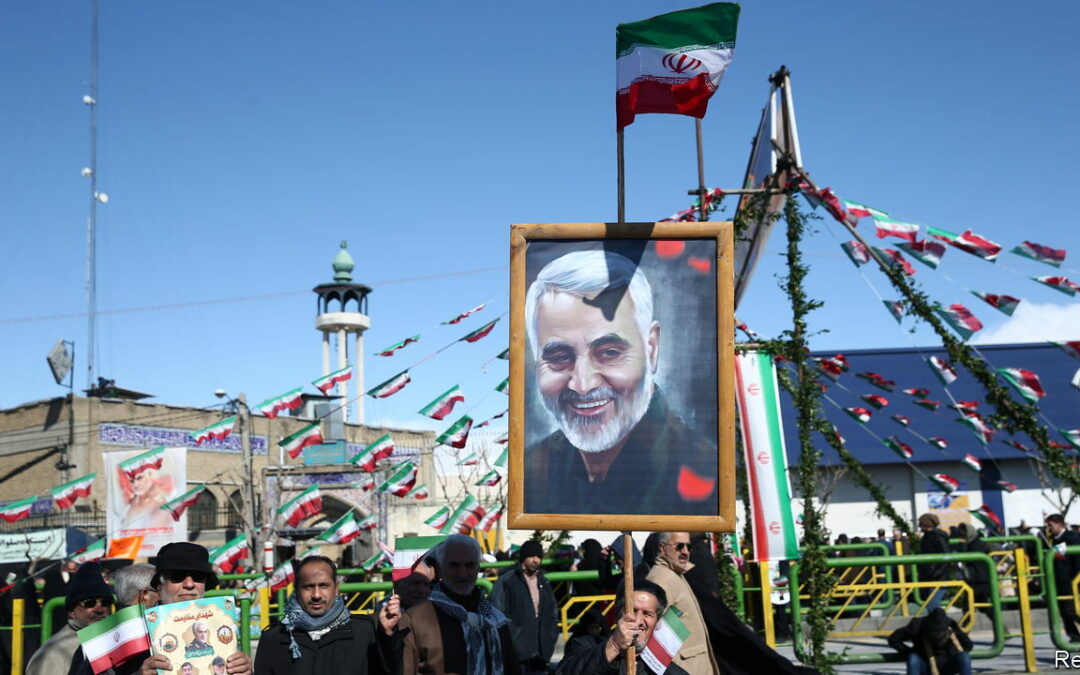AMERICA SAYS THAT its troops in Syria and Iraq have been attacked at least 55 times since Hamas’s assault on Israel on October 7th. Blaming Iran and its proxies across the Middle East, it has been hitting back: on November 12th America launched its third set of air strikes in eastern Syria since late October. Iran’s proxies have so far stopped short of launching attacks that could drag America into full-scale war. But their firepower poses a clear threat to America as well as its allies. What is this self-proclaimed axis of resistance, and how powerful is it?
After the Islamic revolution of 1979, Iran sought to export its ideology and build its political heft throughout the Middle East. One of its tools for doing so was a network of violent proxies and allies that spans Iraq, Lebanon, Syria, Yemen and elsewhere. Although not every member of this group shares Iran’s religious fundamentalism—Sunni members do not even share its creed—they do have common goals: resisting Western influence and confronting Israel.
The axis has long been co-ordinated by Iran’s Quds Force, an arm of the Islamic Revolutionary Guard Corps, the regime’s praetorian guard. The force preys on weak states. In 1982 it began training young Shia militants in Lebanon to harass Israeli soldiers who were occupying the south of the country. Throughout the 1990s the Quds Force provided significant support to Palestinian Islamic groups, including Palestinian Islamic Jihad and Hamas. It also backed the Northern Alliance, a loose grouping in Afghanistan that resisted the Taliban’s takeover in 1996.
In 2002 George W Bush, America’s president, warned of a new “axis of evil” comprising North Korea, Iran and Iraq. After Al-Zahf al-Akhdar, a Libyan newspaper, wrote a widely read editorial condemning the phrase, some Arab and Iranian media began using the phrase “axis of resistance” to describe the growing network of anti-American militias in the region.
In the late 1990s, after Qassem Suleimani (pictured, on a poster), a prominent Iranian security official later assassinated by America, took charge of the group, the Quds Force began to expand its network. It backed Shia opponents of Saddam Hussein’s regime, including the Badr organisation, a powerful militia that was later to claim between 10,000 and 50,000 men under arms. After America’s invasion of Iraq in 2003, the Quds Force established armed groups in the country to fight American and British troops.
In Syria’s civil war, which began in 2011, the Quds Force trained and armed militias allied to Bashar al-Assad, the country’s president. It also rallied around 70,000 armed men from Afghanistan, Pakistan, Lebanon and Iraq to fight in Syria in the decade to 2021, according to Iranian officials. In Yemen the Quds Force supported the Houthis, a Shia group that had rebelled against the Saudi-backed government and taken control of swathes of the country.
America’s State Department estimates that Iran spent $700m a year supporting militias before sanctions hit the country’s revenues in 2019. A large portion of these funds were devoted to stocking the arsenals of Iran’s long-term partners. Hizbullah, which has exchanged regular fire with Israel along the Lebanese border since Hamas’s attack, is thought to sit on an arsenal of 150,000 rockets.
Since Suleimani’s assassination in 2020 the more powerful members of Iran’s axis, such as Hizbullah, have grown more autonomous. Iran says it did not have advance warning of Hamas’s attack on Israel. But it has nonetheless used the conflict to sew more chaos in the region. And it has benefitted in other ways: the fighting in Gaza has halted diplomatic efforts to normalise relations between Israel and Saudi Arabia, Iran’s arch-rival.
Iran has more to gain from the turmoil. Anger across the Middle East over Western support for Israel may help some Iran-sponsored groups attract more disaffected recruits, and the prominence of Hamas, a Sunni group, in fighting Israel could ease sectarian tensions within the network. And should the fighting spread beyond Gaza, a surge in oil prices would fill Iran’s coffers. A full-blown war that draws in America would be catastrophic for the entire region; on that, at least, Iran seems to see eye to eye with the Great Satan. But do not expect it to play peacemaker. ■









